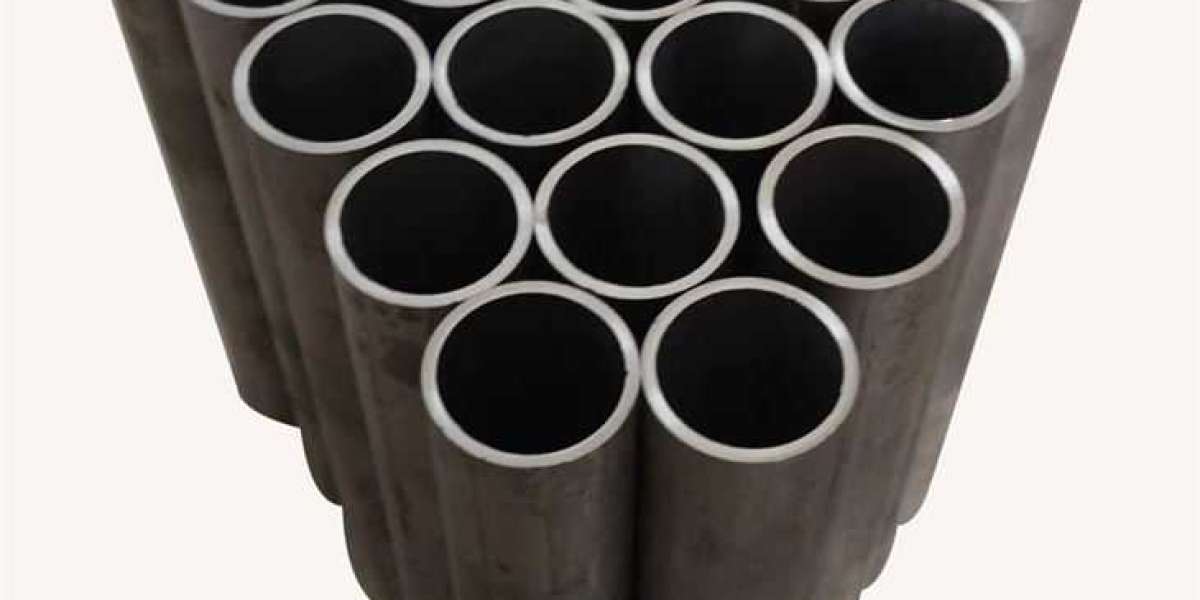Original Title: Review Series: Research Progress of Bone Repair Materials Bone repair material is a feasible method to solve the problem of bone defect repair, which needs to be solved urgently in the field of orthopaedics. As a material for bone defect repair, four basic characteristics must be considered: first, biocompatibility; second, mechanical tolerance; third, biodegradability; fourth, induced regeneration. In recent years, bone repair materials have developed rapidly from autogenous bone, allogeneic bone, inert materials to highly active and multi-functional bone tissue engineering scaffolds. This paper gives a general introduction to three kinds of materials: metal, inorganic non-metal and organic polymer. Metallic materials are the earliest biomaterials studied, which have good mechanical property, especially in tensile strength and toughness, so they are more suitable for the repair of hard tissue defects. Commonly used metal materials include stainless steel, cobalt-chromium alloy, titanium alloy, tantalum alloy and magnesium alloy, among which stainless steel and cobalt-chromium alloy were used earlier. Stainless steel is widely used because of its good mechanical property and low price, but it has the problem of poor corrosion resistance. Cobalt-chromium alloy has good wear resistance, but its biological toxicity limits its further application [2]. Titanium alloy is the most widely used, with strong mechanical property and good biocompatibility, but the high elastic modulus of the implant will produce stress shielding effect, affecting the growth of bone tissue and metal-bone interface integration [3]. In recent years, magnesium alloys have attracted wide attention because of their good tensile strength, fracture toughness and degradation metabolism in vivo [4]. In addition, porous tantalum has attracted wide attention due to its good biocompatibility and corrosion resistance, ideal elastic modulus and suitable pores for bone ingrowth. At present, related products have been applied to clinical practice and are expected to become excellent bone repair materials [5]. The inorganic nonmetal material has good affinity with the natural bone, can stably exist in the human body, and is suitable for being implanted in hard tissue parts of the human body. Commonly used inorganic non-metallic materials include hydroxyapatite, calcium phosphate and bioactive glass. Compared with traditional hydroxyapatite which is not easy to degrade, nano-hydroxyapatite has better bioactivity and absorbability due to its high surface activity and ultrastructure, and has good biocompatibility and bone conductivity of traditional hydroxyapatite [6]. Calcium phosphate has many forms, such as ceramic, powder and bone cement,titanium plate gr7, which has good biodegradability, ideal biocompatibility and bone conductivity, and has a long-term application prospect in bone repair [7]. However, calcium phosphate itself has many disadvantages, such as limited mechanical strength and high brittleness, so it can only be used in non-load-bearing areas when applied alone. Bioactive glass is degradable under physiological conditions and is osteoconductive. However, its brittleness and low bending strength limit its application in hard tissue repair, and most of them can only be used to repair bone defects with small bearing requirements, such as teeth, cartilage, etc. [8]. Organic polymer materials can be divided into natural and synthetic types according to their sources. At present, the most commonly used natural organic polymer materials are collagen,Titanium welding pipe, hyaluronic acid, chitosan and silk fibroin. Collagen and hyaluronic acid can provide innate biological information guidance for cells, improve the adhesion ability of cells and enhance the chemotactic response of cells, but they also have some shortcomings, such as immunogenicity, difficult purification and bionic design, and difficult control of degradation rate in vivo, so their application is limited [9]. Chitosan has been widely studied as a new type of natural biomaterial because of its non-toxicity, good biocompatibility and biosolubility, but it has low mechanical strength and fast degradation [10]. Recently, silk fibroin has shown a good prospect in bone defect repair because of its excellent biocompatibility, high porosity and good mechanical property, as well as the safety and non-toxicity of its degradation products [11]. Poly (lactic acid) (PLA) is one of the most representative synthetic organic polymer materials, and its degradation product lactic acid is one of the normal metabolites in human body, so it has good biocompatibility. In addition, good mechanical resistance and plasticity make the material easy to design and manufacture [12]. In addition to the above three categories of materials, the exploration of new bone repair materials has been carried out, and some progress has been made, including the following directions: first, the expansion and development of new materials (such as carbon materials, metal ion-doped materials, natural biomass calcium carbonate); second, further optimization of functions through composite materials or adding active factors; Third, further optimize the structure with high-end technologies such as 3D printing and nano-bionics. Bone repair materials are developing rapidly and have broad prospects, 3d titanium wire ,titanium tubing price, so it is urgent for us to constantly improve the existing shortcomings and further explore. Material Type Representative Material Advantages and Disadvantages Titanium alloy has strong mechanical property, but it can produce stress shielding effect. Magnesium alloy has high tensile strength and good fracture toughness. The porous tantalum has good biocompatibility and mechanical resistance. Hydroxyapatite (HA), an inorganic non-metallic material, has good biocompatibility, bioactivity and osteoconductivity Ideal biocompatibility and degradability of calcium phosphate Bioactive glass has good bone conductivity but poor mechanical tolerance. The organic polymer material silk fibroin has excellent biocompatibility and mechanical property and is safe and nontoxic. Chitosan is nontoxic and has good biological properties but low mechanical strength. Polylactic acid has good mechanical resistance and plasticity, but its degradation is too fast. References: Expand the full text [1] SeemanE, Delmas PD. Bone qualitythe material and structural basis of bone strengthand fragility. N Engl J Med. 2006 May 25;354(21):2250-61. [2] MadlAK, Kovochich M, Liong M, Finley BL, Paustenbach DJ, Oberdörster G. Toxicologyof wear particles of cobalt-chromium alloy metal-on-metal hip implants Part II:Importance of physicochemical properties and dose in animal and in vitrostudies as a basis for risk assessment. Nanomedicine. 2015 Jul;11(5):1285-98. [3] TataraAM, Mikos AG. Tissue Engineering in Orthopaedics. J Bone Joint Surg Am. 2016Jul 6;98(13):1132-9. [4] LeeJW, Han HS, Han KJ, Park J, Jeon H, Ok MR, Seok HK, Ahn JP, Lee KE, Lee DH,Yang SJ, Cho SY, Cha PR, Kwon H, Nam TH, Han JH, Rho HJ, Lee KS, Kim YC, Mantovani D. Long-term clinical study and multiscale analysis of in vivobiodegradation mechanism of Mg alloy. Proc Natl Acad Sci U S A. 2016 Jan19;113(3):716-21. [5] YazdimamaghaniM, Razavi M, Vashaee D, Moharamzadeh K, Boccaccini AR, Tayebi L. Porousmagnesium-based scaffolds for tissue engineering. Mater Sci Eng C Mater BiolAppl. 2017 Feb 1;71:1253-1266. [7] PericM, Dumic-Cule I, Grcevic D, Matijasic M, Verbanac D, Paul R, Grgurevic L,Trkulja V, Bagi CM, Vukicevic S. The rational use of animal models in theevaluation of novel bone regenerative therapies. Bone. 2015 Jan;70:73-86. [8] KargozarS, Lotfibakhshaiesh N, Ai J, Mozafari M, Brouki Milan P, Hamzehlou S, Barati M,Baino F, Hill RG, Joghataei MT. Strontium- and cobalt-substituted bioactiveglasses seeded with human umbilical cord perivascular cells to promote boneregeneration via enhanced osteogenic and angiogenic activities. Acta Biomater.2017 Aug;58:502-514. [9] QuadeM, Schumacher M, Bernhardt A, Lode A, Kampschulte M, Voß A, Simon P, UckermannO, Kirsch M, Gelinsky M. Strontium-modification of porous scaffolds frommineralized collagen for potential use in bone defect therapy. Mater Sci Eng CMater Biol Appl. 2018 Mar 1;84:159-167. [10] ShariatiniaZ. Carboxymethyl chitosan: Properties and biomedical applications. Int J BiolMacromol. 2018 Dec;120(Pt B):1406-1419. [11]SQ, Zhou C, You HJ, Ma Y, Li JM, Yang L, SungKL, Zhang YG. Silk structure and degradation. Colloids Surf B Biointerfaces.2015 Jul 1;131:122-8. [12] FélixLanao RP, Jonker AM, Wolke JG, Jansen JA,titanium seamless tube, van Hest JC, Leeuwenburgh SC.Physicochemical properties and applications of poly(lactic-co-glycolic acid)for use in bone regeneration. Tissue Eng Part B Rev. 2013 Aug;19(4):380-90. Return to Sohu , see more Responsible Editor: yunchtitanium.com
Sök
populära inlägg
-
 Диплом о высшем образовании за короткий срок
Förbi worksale
Диплом о высшем образовании за короткий срок
Förbi worksale -
 上海狗友吸尘器哪个牌子好
Förbi hthtgthh
上海狗友吸尘器哪个牌子好
Förbi hthtgthh -
 Ваш диплом без лишних забот: быстро и безопасно
Förbi worksale
Ваш диплом без лишних забот: быстро и безопасно
Förbi worksale -
 Как выбрать надежный интернет магазин, реализующий дипломы?
Förbi sonnick84
Как выбрать надежный интернет магазин, реализующий дипломы?
Förbi sonnick84 -
 Как можно будет быстро приобрести аттестат в онлайн магазине
Förbi sonnick84
Как можно будет быстро приобрести аттестат в онлайн магазине
Förbi sonnick84



